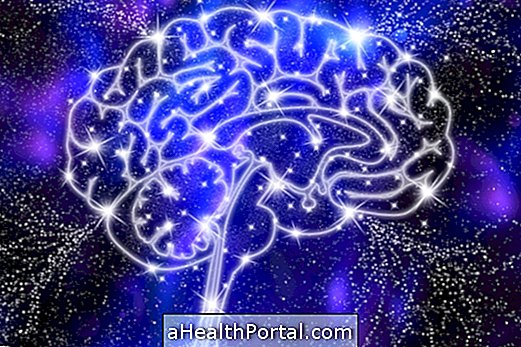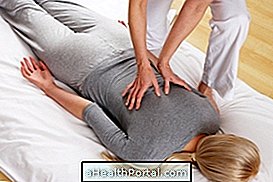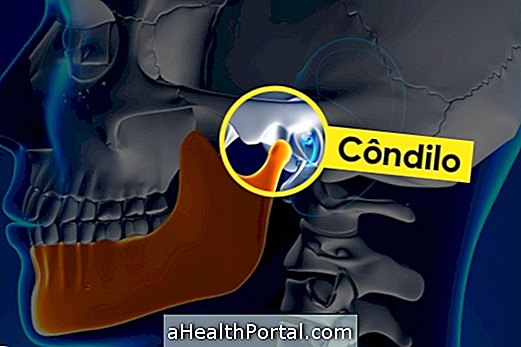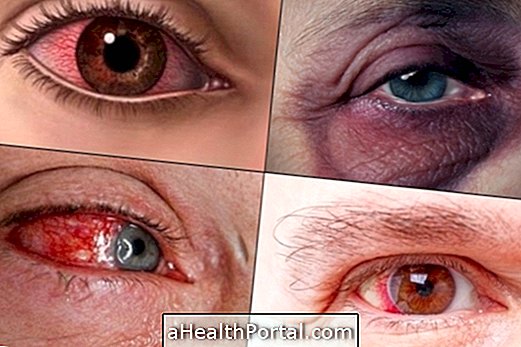Dementia with Lewy bodies is a degenerative brain disease that compromises regions responsible for functions such as memory, thinking, and movement, and is caused by the accumulation of proteins, known as Lewy bodies, in brain tissue.
This disease arises with advancing age, being more common over 60 years, and causes symptoms such as hallucinations, progressive memory loss and difficulty concentrating, as well as tremors and muscular rigidity, being considered the second most common type of degenerative dementia, right after Alzheimer's.
Although there is no cure for Lewy body dementia, it is possible to treat and control symptoms with the use of physician-directed remedies such as Quetiapine or Donepezil, for example, which alleviate some symptoms, in addition to investing in physical therapy and occupational therapy. In this way, the person can live for many years with maximum independence and quality of life.

Main symptoms
Dementia by Lewy bodies show symptoms that gradually appear, and slowly worsen. The main ones are:
- Loss of mental capacities, called cognitive functions, such as memory, concentration, attention, communication and language;
- Mental confusion and disorientation, which oscillate between moments of extreme confusion and calmer moments;
- Tremors and muscular rigidity, known as parkinsonism, because they mimic the movements of Parkinson;
- Visual hallucinations, in which the person sees things that do not exist, like animals or children, for example;
- Difficulty in evaluating distances, called visuospatial changes, which can lead to frequent falls;
Generally, changes in mental abilities first appear, and as the disease progresses, changes in movement occur, and pictures of mental confusion become more severe. It is also common that there are symptoms of mood changes, such as depression and apathy.
Due to similar symptoms, this disease can be confused with Alzheimer's or Parkinson's. There is still no known cause for Lewy Body Dementia, so anyone can develop this disease, which is more common in men over 60. and no risk factors were identified.

How is the treatment done?
Since there is no cure for dementia with Lewy bodies, treatment should be guided by a neurologist, geriatrician or psychiatrist to alleviate the symptoms of each person and improve the quality of life of the person.
So the main types of treatment include:
- Antipsychotic medicines, such as Quetiapine or Olanzapine: can reduce the frequency of hallucinations, but can cause several side effects or worsen the general condition of the person and therefore, when used, should be constantly evaluated by a doctor;
- Remedies for memory, such as Donepezil or Rivastigmine: increase the production of neurotransmitters in the brain, which can improve concentration, memory and reduce the onset of hallucinations and other behavioral problems;
- Remedies to improve motor skills, such as Carbidopa and Levodopa, widely used in Parkinson's: they reduce motor symptoms such as tremors, muscle stiffness or slow movements. However, they may worsen hallucinations and confusion and may therefore be associated with memory remedies;
- Antidepressant medicines, such as Sertraline or Citalopam: used to improve depressive symptoms, in addition to help control behavior and regulate sleep;
- Physiotherapy : Helps maintain muscle strength and flexibility, as well as improve cardiovascular capacity with various types of exercises;
- Occupational Therapy : It is very important to help maintain independence by teaching the person to do the daily tasks with their new limitations.
In addition, to help combat the symptoms of frequent sadness, anxiety or restlessness, the caregiver may use other alternative medicine therapies such as aromatherapy, music therapy or massages, for example.
It is also recommended to perform exercises to keep the brain active, avoid smoking and adopt a healthy and balanced diet, giving preference to fruits and vegetables. Check out some exercises that keep your brain active.
How is the diagnosis made?
The diagnosis of dementia with Lewy bodies is made by a neurologist, geriatrician or psychiatrist, after a complete evaluation of the symptoms, family history and physical examination.
Although some imaging tests, such as computed tomography or magnetic resonance imaging, may help identify degeneration of some parts of the brain, they can not identify Lewy bodies, which can only be observed after death.
In this way, the doctor will differentiate this disease from others with similar symptoms, such as Alzheimer's and Parkinson's, and indicate the most indicated treatment.
























